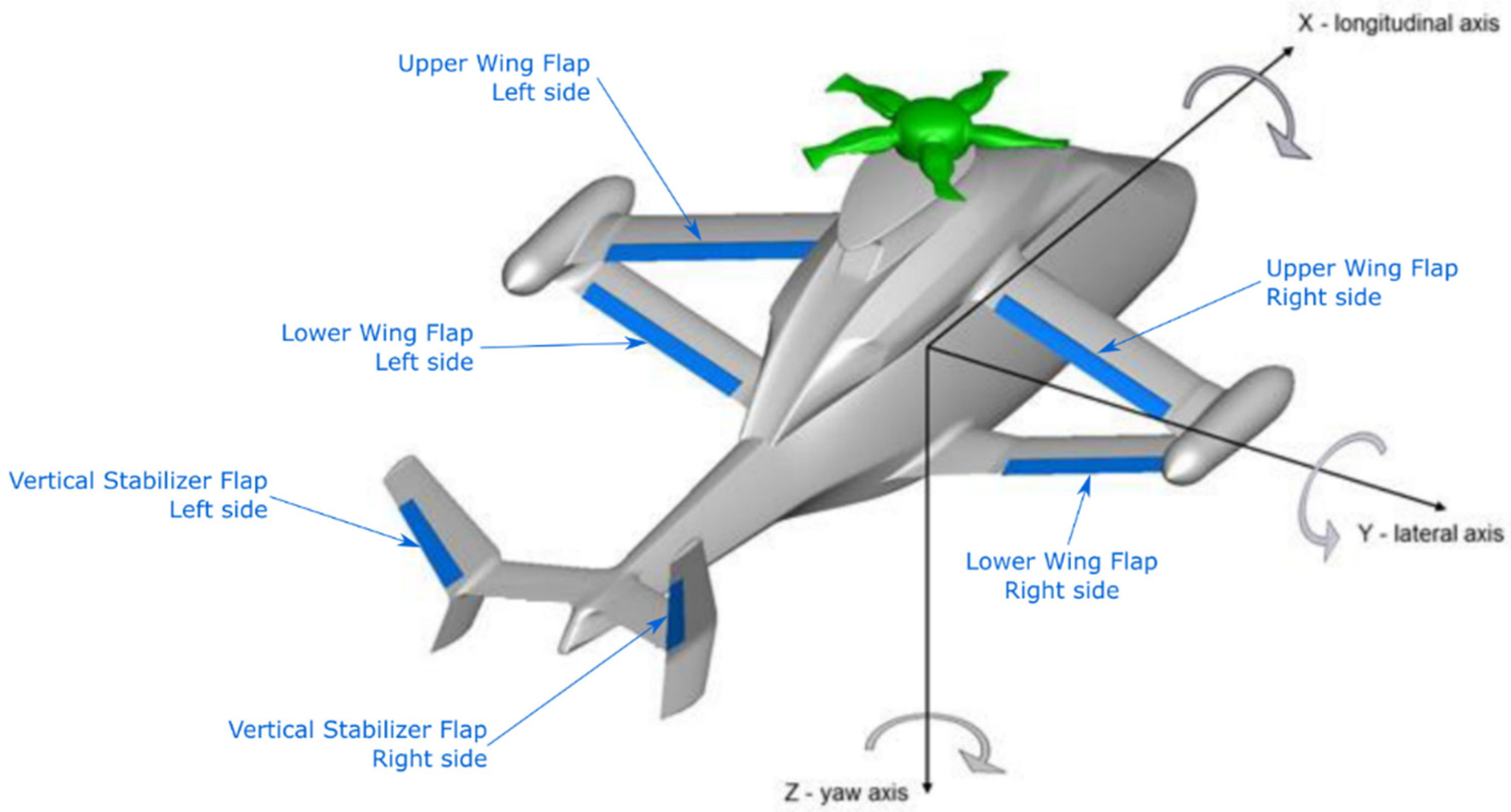Aircraft Longitudinal Axis - Last week, Learning to Fly wrote about the four forces of flight. To recap, these are lift, weight, push, and pull. These forces are important to the aerodynamics of the aircraft and will be very important during your flight training, especially as you learn to control the aircraft. In addition to these in-plane forces, it is important to understand the three axes of rotation of the plane. You can think of each line as a line of thought passing through the center of the plane of gravity (CG). Whenever an airplane changes attitude in flight, it behaves like one or more of these. Below is an excerpt from the ASA's Private Pilot Program 2015 with some numbers to help you understand each line.
The lateral line is the imaginary line from the wing to the wing of the aircraft. A rotation about this axis is called a pitch. The position is controlled by the elevator, and this rotation is referred to as long control or long stability.
Aircraft Longitudinal Axis

The long line is the imaginary line from the nose to the tail. Rotation around a long axis is called a roll. Rotation is controlled by the ailerons, and this rotation is referred to as lateral control or lateral stabilization.
Aircraft Theory Of Flight
A vertical line is an imaginary line extending vertically through the intersection of the axis and the longitudinal axis. The rotation around the line is called yaw. Yaw is controlled by the rudder, and this rotation is referred to as directional control or static control.
The center of gravity (the point of reference where all the weight is concentrated) is where the plane would be when stopped at that moment. The three axes meet at the center of the magnet. Control offices and parachutes are operated around this center of gravity.
Later in the week I will ask you sample questions related to the material covered in previous weeks. These questions will come from Chapter 1 of the Essentials of the Private Pilot Test Preparation Book. Each question is very similar in nature to what you might find on the FAA proficiency test. Here's a teaser for next week... We and our partners use cookies to store and/or access information on your device. We and our partners use the information to personalize ads and content, advertising and measurement metrics, audience insights and product development. An example of processed data may be a unique identifier stored in a cookie. Some of our partners may process your data as part of their legitimate business interests without requesting your consent. To determine the purposes for which they have a legitimate interest, or to object to this data being processed, use the list of vendors below. The request is only used to process the information from this website. If you wish to change your settings or withdraw your consent at any time, the link to do so is located in our privacy policy on the home page.
Center of Gravity (CG) The gravitational force that tends to pull all bodies in the Earth's gravitational field toward the center of the Earth. CG can be thought of as the point of gravity of the entire aircraft. If the plane was supported at true CG, it would be balanced in any position. CG is very important in aircraft, as its position plays a major role in safety.
New: Flight Path Vector In 3d Cockpit/hud
The CG is determined by the aircraft design. Designers estimate how far CP will work. They then adjust the CG before the CP for the proper airspeed to allow enough time for the aircraft to recover.
Line of flight Whenever an airplane changes its attitude, it must rotate about one or more of the three axes. The diagram shows three axes, which are imaginary lines that pass through the center of the plane.
Plane axes can be thought of as imaginary axes that revolve around a plane that turns like a circle. At the center, where all three axes meet, each is perpendicular to the other two. The line that runs through the fuselage from the nose to the tail is called the axial axis. The line extending from wing to wing is the side, or pitch, line. The line through the center, from top to bottom, is called the vertical or yaw axis. Roll, pitch and yaw are controlled by three control surfaces. The roll is made by the ailerons, which are at the rear end of the wings. The affected area is the elevator, the rear part of the horizontal assembly. Yaw is controlled by a rod, the rear part of which is vertical. This article discusses yaw, pitch and roll as part of an aircraft's coordination. For details in mechanics, see Moment of inertia § Main axis. For Euler's angle with the same name, see Euler's angle § Tait–Bryan.
An airplane in flight has the right to rotate in three directions: yaw, the nose to the left or right about the vertical axis; Board, nose up or down about the axis that goes from wing to wing; and rolling, circling the line from the nose to the tail. Axes are usually referred to as vertical, lateral (or transversal) and longitudinal. This axis moves with the vehicle and rotates relative to the earth and the craft. This definition has been applied similarly to spaceflight, where the first manned spacecraft were built in the late 1950s.
Axes Of Movement Of An Aircraft
The switch is made by torque (or momt) around the core. In an airplane, this is done internally by means of a differential control system that distributes the netaerodynamic forces over the weight of the vehicle. The elevator (moving the tail horizontally) provides pitch, the angle to the vertical tail provides yaw, and the ailerons (beating the wings in opposite directions) provides roll. In space, the most common approach is the reaction control system, which consists of small rockets that are used for maneuvering special vehicles.
Usually this axis is represented by the letters X, Y and Z to compare with the horizontal axis, usually called x, y, z. This is usually done so that X is used for long lines, but there are other ways to do it.
Yawachs have their origin in the center of gravity and towards the bottom of the plane, separated from the wings and the line towards the fuselage. The movement of this axis is called yaw. A positive yaw attitude moves the nose of the aircraft to the right.
The word yaw was originally applied to a ship, and refers to the direction of a ship's steady rotation around it. Its behavior is unknown.
Aviation Concept Axis Movement Three Dimensional Stock Vector (royalty Free) 191329865
) has its origin in the center of gravity and is directed to the right, parallel to the line drawn from wing to wing. Movement about this axis is called pitch. The best way to raise the nose of the plane and reduce the tail. Above is the basic control of the field.
) has its origin in the center of gravity and is directed forward, parallel to the fuselage reference line. Movement about this axis is called roll. Changing the angle about this axis is called bank.
A positive direction raises the left wing and lowers the right wing. The pilot rotates and raises the elevator on one wing and lowers it on the other. This changes the angle of the bank. Ailerons are the primary bank control. The rate also has a secondary effect on the bank.

This axis is related to the primary axis of inertia, but not the same. It is a geometrical axis of symmetry, which does not divide the distribution plane.
Technique: The Forward Slip
In aeronautical engineering, the forward rotations on these axes are often called Euler angles, but this conflicts with current usage elsewhere. Their back count is similar to Fret-Serret. Performing a rotation on the inner side of the equation is equivalent to multiplying the right side of the feature matrix (the matrix with the elements of the data set as columns) by the rotation matrix.
Tracker gyro remote control four axis aircraft, longitudinal axis anatomy, four axis aircraft, 4 axis aircraft drone, longitudinal axis definition, gyro remote control four axis aircraft, axis aircraft, longitudinal axis of body, longitudinal axis, define longitudinal axis, 4 axis aircraft, longitudinal axis aircraft

